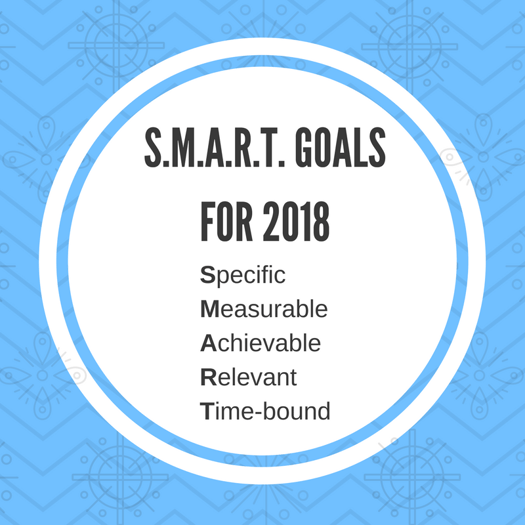One challenge inevitably faced by business blogs around the world is the process of setting realistic blogging goals. It’s no secret that concrete progress is made by working toward specific objectives, but actually deciding which goals suit your business can take time. Keep reading, and we’ll explain how to set goals your business can actually achieve, as well as how to select which metrics you should take into account when measuring your attempts to reach these goals.
Think SMART When It Comes To Content Development
At first, setting a digital content goal might seem as easy as saying, “Well, I want our business blog to do this.” But it’s not that simple, because there are several specific factors to take into consideration. For example, how exactly do you expect your business blog to accomplish what you’re seeking? Is there a timeline concerning when this result should be seen? And is the goal clear and specific enough that your whole company is aligned in working toward it?
Fortunately, this frustrating ambiguity is easily avoided by incorporating SMART goals into your content development system. SMART is a mnemonic device that stands for Specific, Measurable, Achievable, Relevant and Time-bound – and these criteria are what make up a truly effective goal.

So, how exactly do you craft a SMART goal? Here’s how it works:
- Specific: A specific content development goal details exactly what you want to accomplish, why it’s important for your business, who’s involved in working toward the goal and how the goal can be accomplished.
- Measurable: The best way to ensure that your digital marketing efforts are working is by gauging their success with measurable metrics, commonly referred to as KPIs (key performance indicators). Obviously, the KPIs you choose to keep an eye on will depend on your overall goals. We’ll get into the specifics of what you should be measuring later on, so hold tight.
- Achievable: This one’s easy – is your SMART goal realistic based on current conditions? If not, scale it back to something that’s more manageable considering your company’s existing resources.
- Relevant: Your business blog SMART goals should align with your company’s general goals, and they should make sense in the grand scope of things.
- Time-bound: Goals need a deadline. Otherwise, when would they ever get done? Setting a target date to reach your goal helps company employees prioritize tasks in order to cover both everyday duties and long-term goals.
When you combine these five characteristics, the result is a goal that’s reasonable, clearly achievable and easy for all of your content writers to understand.
What Goals Should You Be Setting For Your Business Blog?
The process of creating your SMART goals will often come down to deciding which KPIs best represent the progress of your online marketing content. HubSpot, for example, recommends using inbound links and blog visitors, among various other KPIs.
Likewise, here are several measurements that we think make for excellent SMART goals:
- Blog visitors: A unique visitor count is a clear choice for a SMART goal because it’s so easily measurable – as your content receives more exposure, it’ll show in the numbers.
- Leads generated: Your sales blog’s ultimate goal is likely to increase your company’s exposure and, eventually, convert site visitors into customers. So, it’s only fitting that your content generates leads. If you rack up page views but haven’t secured a lead in months, you’ll want to look over your work for areas of improvement (hint: this one might involve a call-to-action) and then set a suitable goal once you’ve made the right changes.
- Inbound links: If a visitor involved with another blog finds your content valuable, they may link to it from their own content – and that’s a very clear sign that you’re doing something right. Aiming for a specific number of inbound links as a SMART goal is a great way to establish your business as an industry authority.
- Social media engagement: It’s natural for people to tell friends and acquaintances about things they like – digital content included. That’s why virtually every successful sales blog features simple social media sharing widgets. Have your numbers remained low? Set a specific Facebook or Twitter share number as your next SMART goal. This type of exposure can work wonders for your blog traffic.
- Subscribers: When you set up your sales blog, you probably devised some way to allow users to subscribe to your work, whether via an RSS button or through an email-entry form. This metric works well as a SMART goal because, once again, it’s a simple number, but it shows just how many visitors were enticed enough by your content to come back for more.
Content Development SMART Goal Examples
Next, let’s compare the difference between a fully realized SMART goal and its considerably less-effective counterpart.
- Not-So-SMART goal: Our business blog will drive company sales.
The above goal’s flaws are pretty obvious. There’s no clear meaning of “drive company sales,” there’s not a deadline in sight and the goal makes no mention of who’s involved in working toward the goal. Basically, it’s just an agreeable statement.
- SMART goal: Our content writers will help secure 5 leads by the end of December by creating educational, diverse and user-friendly blog content with clear calls-to-action. The progress will be measured through online forms that readers reach via links located on the blog posts as well as through surveys that ask these leads how they discovered our company.
To analyze this goal, take the SMART acronym into consideration. The goal is both specific and relevant; it details exactly what’s happening, who’s making it happen, how they’re doing it and how it’s benefitting the business. It’s measurable, as evidenced by the two tracking methods. And based on the fact that the business has dedicated content writers, it’s also achievable. Plus, there’s a deadline – that makes it time-bound.
How Do Business Blogs Reach Their Goals?
There’s likely one final question on your mind – once you set goals, how are you supposed to achieve them? Here’s the bad news first: there’s no universally effective recipe for blog content. The good news, however, is that there are a number of best practices you can follow to get started, such as:
- Adhere to good SEO behaviors
- Always include a call-to-action
- Engage visitors with multimedia content
- Use several different types of blogs
- Use a rigid editing and proofreading system
- When something doesn’t work, tweak it
- Use blogging tools to track website metrics
This doesn’t cover everything, of course, but these tips should provide a solid foundation for a business blog that’s ready to check off a hefty list of SMART goals.
Strive For Business Blogging Success
Once you’ve mastered the SMART goal system, refining your business blog strategy should be a breeze. But if you lack the resources to manage a regular blogging schedule, there’s no need to lose hope – Virtucom Group’s content writing services can save the day. After you’ve decided whether or not outsourced content is the right move for your business, download our free ebook to learn which questions you should ask when you’re searching for a copywriting agency.
About Virtucom Group
Consistent business blogging yields results – more clicks, more subscribers and – ultimately – more conversions. Whether you’re writing an automotive blog, an accounting blog, a healthcare blog or a home renovation blog, blogging for business and content development are useful for any industry. Follow the content writers at the Virtucom Group blog as they share digital marketing tips and discuss website content writing services that can optimize your business blog.






